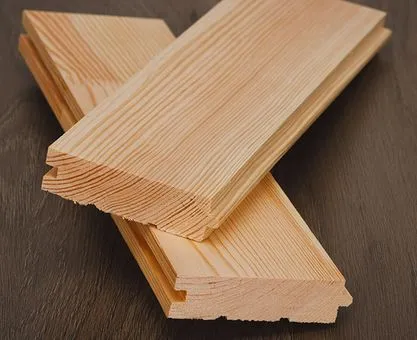
When choosing a floorboard as a floor covering, first of all, you need to know the advantages and disadvantages of the floor from the boards. This knowledge will allow you to choose the right floor board that best suits your needs.
If the presence of natural material in the house and the natural beauty of wood are important to you, then feel free to stop on the floor board and do not hesitate. Once you invest the time and money, you will enjoy your choice every day for many years to come.
The advantages of the floor from the boards include the following arguments:
- Differs in high durability and reliability
- Keeps warm
- Made from natural materials
- It has antistatic and anti-allergic properties (when varnished, it loses this advantage)
- Made from renewable natural resources (environmentally friendly)
- Fast laying and minimum preparatory work
The disadvantages of the floor include:
- Conducts sound well
- Demanding in care and operation
- does not allow waterlogging
- soft, not resistant to abrasion (without coating with special multi-component varnishes). Requires protection from scratches, dents (furniture heels, felt tips, etc.)
- requires periodic renewal of the protective paint layer
- Prone to decay (the use of an antiseptic eliminates this problem)
- Changes shape (shrinks, swells, warps, cracks)
If you nevertheless opted for a floor board, then it is very important to know its dimensional and qualitative parameters when choosing it.
Thickness. As a rule, it is from 22 to 40 mm. The most popular sizes are 30, 32, 35 mm. Boards of this thickness are used in standard flooring, when the span between the joists (beams on which the floor boards are attached) is from 40 to 60 cm. A 40mm thick floorboard is used mainly when the span between the joists is more than 70cm.
Width. The range of the floor board in width is quite large: from 60 mm to 135 mm. A board with a width of 80 mm or less is considered narrow and is used for a specific design. A 120 mm wide floorboard looks organically in wooden houses made of beams or in large rooms. The most optimal width for a floor board is 100 mm.
Length. The main lengths of the floorboard are 3 – 4 m, other sizes are also made to order (2 m, 4.5 m, 6 m, etc.). The main factor in determining the length of floorboard required is minimizing floorboard waste. This, in turn, depends both on the area of the floor covering and on the method of laying the floorboard. For example, when laying a floor board in a checkerboard pattern, a minimum of waste is obtained, but this is not always expedient and beautiful.
Board type (solid or spliced)
A solid floorboard is made of solid wood, retaining all its properties and features (knots, homogeneous structure, structural features of wood), which makes the overall floor pattern unique.
Jointed floorboards are made from quality-optimized blanks that have had wood defects (dry and rotten knots, resin pockets, etc.) removed.
In the highest grade of finger jointed boards, there are no knots at all, and in the first grade there are live light knots.
The main advantages of a finger-jointed floorboard:
- perfect board geometry is achieved
- possible complete absence of knots
- with these pluses – a competitive price
The disadvantages of a spliced floor board include:
- not everyone likes spliced spike
- comparative high cost
- the distance between the lags when laying the board – 40cm
- some people don’t like the lack of knots
The choice of floorboard is also influenced by the way the finished floor is processed. If the floor is planned to be varnished, then you need to choose the board of the highest quality. If the finished floor is planned for painting, then on the contrary, the floor board should be of lower quality, since the paint will hide all visible defects of the wood.

